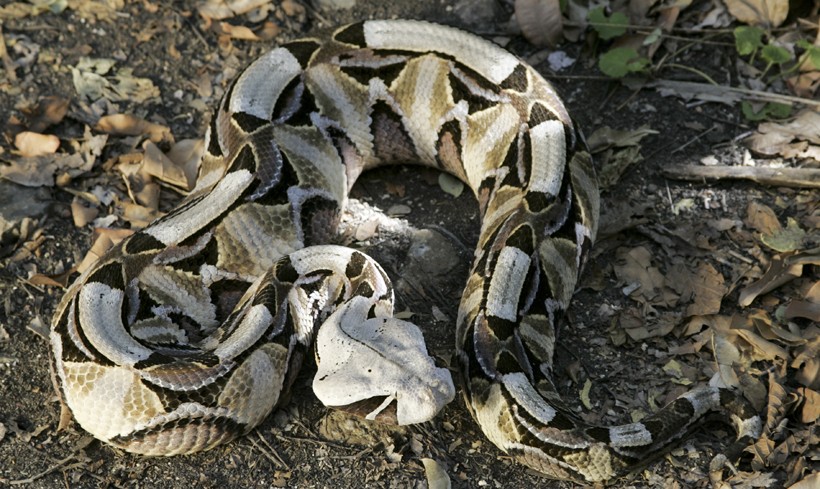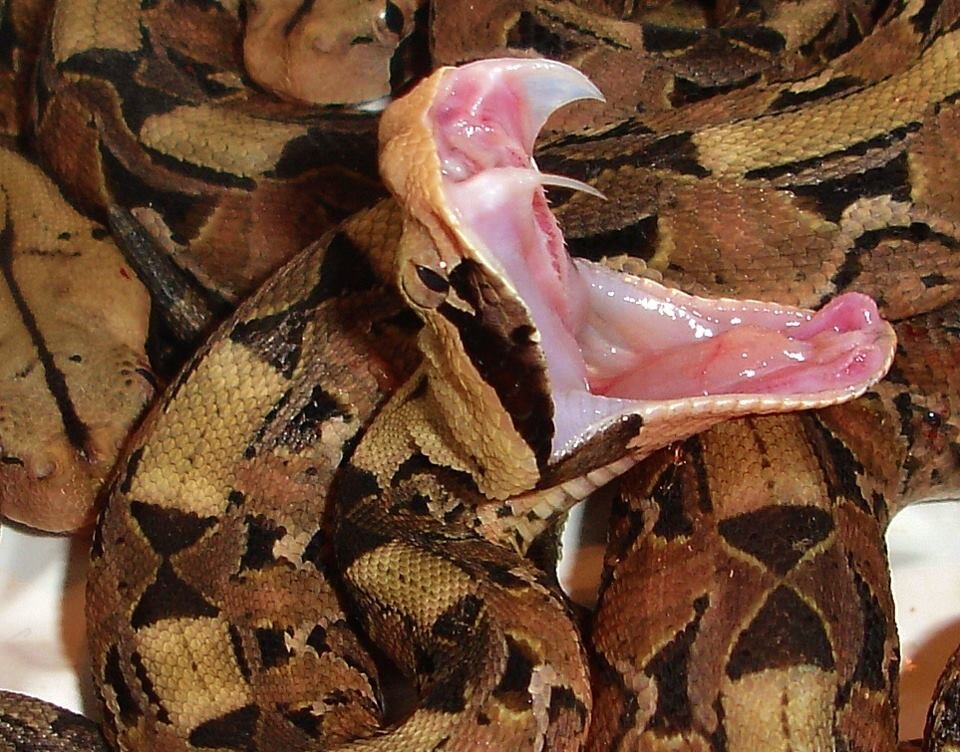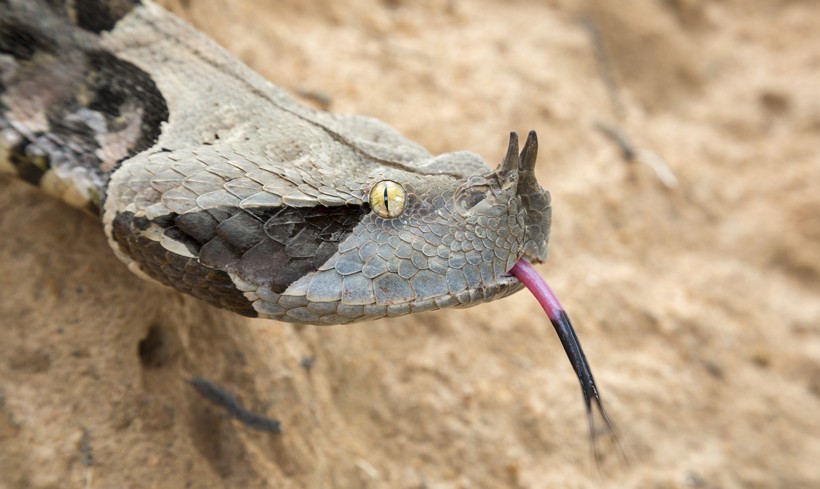Over the years I've been to quite a few reptile shows/expos in South Carolina. At these exhibitions I've seen herps from all regions of the world, venomous and nonvenomous, of all colors and sizes. Of the myriad of herps that I've seen, there is one that always stands out to me: Bitis gabonica. Also known as the Gaboon Viper, Bitis Gabonica is an intimidating specimen from the rainforests and savannas of sub-Saharan Africa. Unlike the vipers found here, which are of the family Crotalinae, the Gaboon Viper belongs to Viperinae, a family known as the "true vipers". Members of this family do not have the heat sensing pit organs that our local pit vipers possess. Within Viperinae is the genus, Bitis, containing vipers from Africa and the southern Arabian Peninsula. Members of this genus are well known for their ability to puff up their bodies when threatened. Other notable Bitis species are the Rhino Viper, Puff Adder, Horned Adder, and another personal favorite of mine, the Ethiopian Mountain Adder.
Most gabonica specimens that I've seen have been quite small, typically under 12 inches but with thick, muscular bodies. However, these vipers grow up to 5 feet and length and are the heaviest vipers in the world, even surpassing the Eastern Diamondback. Since Gaboon Vipers are ambush predators, they don't need to move much and are thus very compact/stout. This size and feeding behavior allows them to feed upon rodents and larger prey, including monkeys and even small antelope. Their heads are massive and contain the longest fangs of any snake, capable of delivering cytotoxic venom from enormous venom glands. Fortunately, this species rarely bites people and is known to have a somewhat docile disposition. Females and males can be told apart by the length of their fangs in relation to their body size: 6% for females and 12% for males. Also, females are typically a bit more plump for reproductive purposes and are viviparous. Between their raised nostrils are two small "horns" which are simply modified scales, a trait shared by several other members of Bitis. Possibly most striking about Bitis gabonica is their color and patterns consisting of a series of pale, rectangular blotches running down the center of the back, interspaced with dark, yellow-edged hourglass markings.
While this viper is not local, there have been instances in which Gaboon Vipers have escaped their containment in the USA, with one instance even occurring in Mount Pleasant. Due to mistakes by handlers and irresponsible "pet" owners, dangerous reptiles often end up in areas where they do not belong. Thus, it is important to not only recognize venomous snakes in our area, but also in regions abroad. This may sound scary but the danger presented by this specimen may be one of the reasons I find myself so attracted to it, and the same has been said by many other B. gabonica enthusiasts. These beautiful vipers always make my heart skip a beat when I see them and continue to inspire me on my herp journey.
Sunday, March 26, 2017
Subscribe to:
Post Comments (Atom)



1 comment:
Definitely an awe-inspiring snake!
Post a Comment